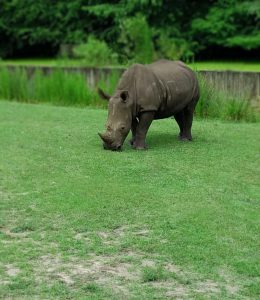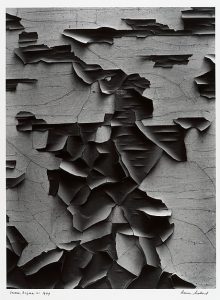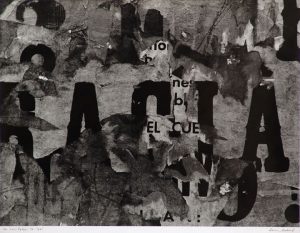Monthly Archives: January 2017
Practice Colloge

100 Most Influential Photos

So much of great photography is being in the right spot at the right moment. That was what it was like for sports illustrated photographer Neil Leifer when he shot perhaps the greatest sports photo of the century. “I was obviously in the right seat, but what matters is I didn’t miss,” he later said. Leifer had taken that ringside spot in Lewiston, Maine, on May 25, 1965, as 23-year-old heavyweight boxing champion Muhammad Ali squared off against 34-year-old Sonny Liston, the man he’d snatched the title from the previous year. One minute and 44 seconds into the first round, Ali’s right fist connected with Liston’s chin and Liston went down. Leifer snapped the photo of the champ towering over his vanquished opponent and taunting him, “Get up and fight, sucker!” Powerful overhead lights and thick clouds of cigar smoke had turned the ring into the perfect studio, and Leifer took full advantage. His perfectly composed image captures Ali radiating the strength and poetic brashness that made him the nation’s most beloved and reviled athlete, at a moment when sports, politics and popular culture were being squarely battered in the tumult of the ’60s.
This photo impacted the world by showing that Muhammad Ali is a great athlete and that he is a boxing champion. I liked this photo because of the emotion and force boxing. The emotion in this photo evokes hate,strength and anger. The photographer was trying to show the viewer that sports are entertaining.This photo appeals to me by showing the art of boxing.

It may be the most famous silhouette ever photographed. Shooting Michael Jordan for LIFE in 1984, Jacobus “Co” Rentmeester captured the basketball star soaring through the air for a dunk, legs split like a ballet dancer’s and left arm stretched to the stars. A beautiful image, but one unlikely to have endured had Nike not devised a logo for its young star that bore a striking resemblance to the photo. Seeking design inspiration for its first Air Jordan sneakers, Nike paid Rentmeester $150 for temporary use of his slides from the life shoot. Soon, “Jumpman” was etched onto shoes, clothing and bedroom walls around the world, eventually becoming one of the most popular commercial icons of all time. With Jumpman, Nike created the concept of athletes as valuable commercial properties unto themselves. The Air Jordan brand, which today features other superstar pitchmen, earned $3.2 billion in 2014. Rentmeester, meanwhile, has sued Nike for copyright infringement. No matter the outcome, it’s clear his image captures the ascendance of sports celebrity into a multibillion-dollar business, and it’s still taking off.
This image impacted the world in a big way by Jordan making a legacy in his dunk.I liked this photo because of how far this dunk has come in life and it just continues to grow. The emotion in this image gives determination and achievement.The photographer was trying to show the viewer that nothing is impossible. This photo is intriguing to me because Michael Jordan is the best athlete in the world.

In June 1963, most Americans couldn’t find Vietnam on a map. But there was no forgetting that war-torn Southeast Asian nation after Associated Press photographer Malcolm Browne captured the image of Thich Quang Duc immolating himself on a Saigon street. Browne had been given a heads-up that something was going to happen to protest the treatment of Buddhists by the regime of President Ngo Dinh Diem. Once there he watched as two monks doused the seated elderly man with gasoline. “I realized at that moment exactly what was happening, and began to take pictures a few seconds apart,” he wrote soon after. His Pulitzer Prize–winning photo of the seemingly serene monk sitting lotus style as he is enveloped in flames became the first iconic image to emerge from a quagmire that would soon pull in America. Quang Duc’s act of martyrdom became a sign of the volatility of his nation, and President Kennedy later commented, “No news picture in history has generated so much emotion around the world as that one.” Browne’s photo forced people to question the U.S.’s association with Diem’s government, and soon resulted in the Administration’s decision not to interfere with a coup that November.
This photo impacted the world by showing the danger of protesting and fire. I liked this photo because of how calm the monk is and the look of the fire. The emotion of the photo shows people scared and non helpful, but the monk even though he is on fire is showing that he is not scared. The photographer is trying to show the viewer that protesting can cause violence. This photo is intriguing because I know how fire can hurt you.
Blur Effects

Radial Blur

Iris Blur

Field Blur
3 Best Mirror Abstraction



Aaron Siskind


 My first impression on his pictures were that they were very creative and filled with texture. Aaron Siskind achieves abstraction by shooting his photos differently and being creative doing it. Elements important in his work is texture and shape. Some techniques I can use to achieve his style work is by finding texture and getting close up.
My first impression on his pictures were that they were very creative and filled with texture. Aaron Siskind achieves abstraction by shooting his photos differently and being creative doing it. Elements important in his work is texture and shape. Some techniques I can use to achieve his style work is by finding texture and getting close up.
